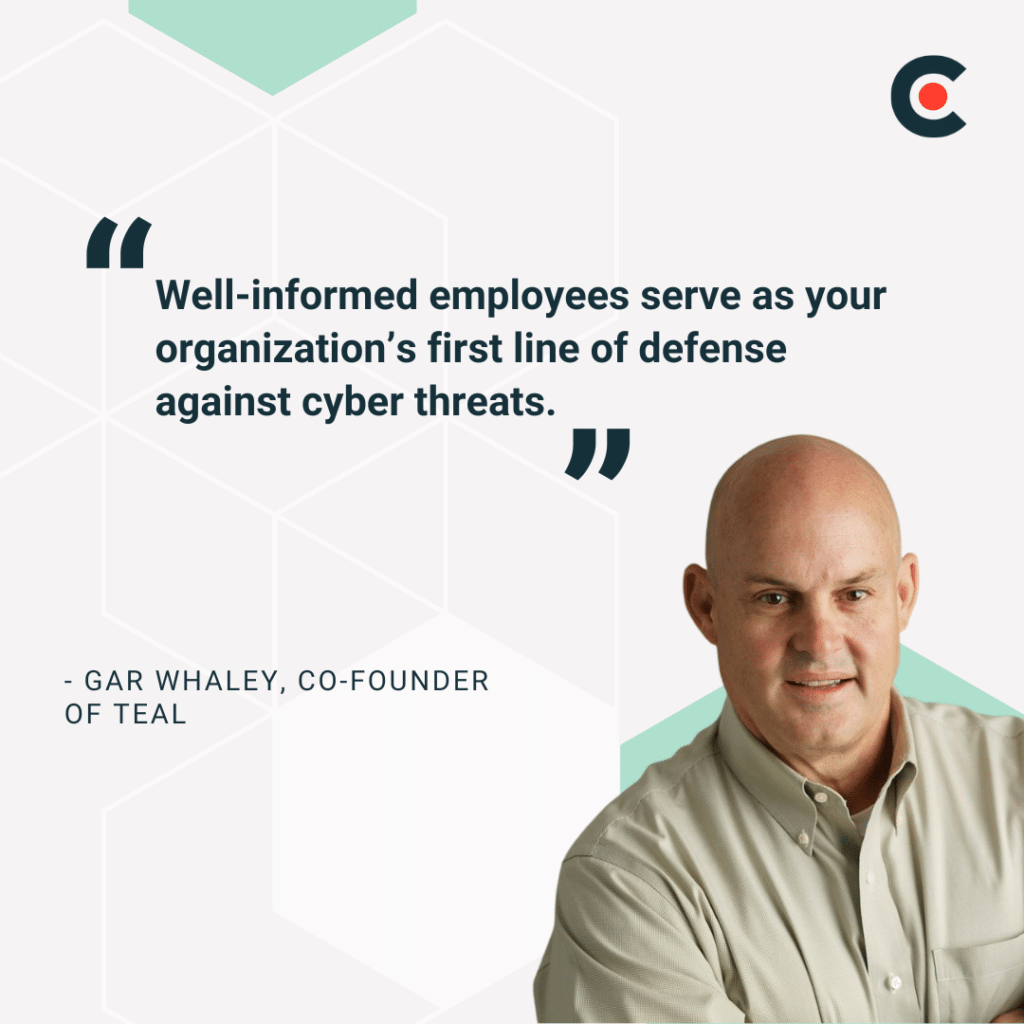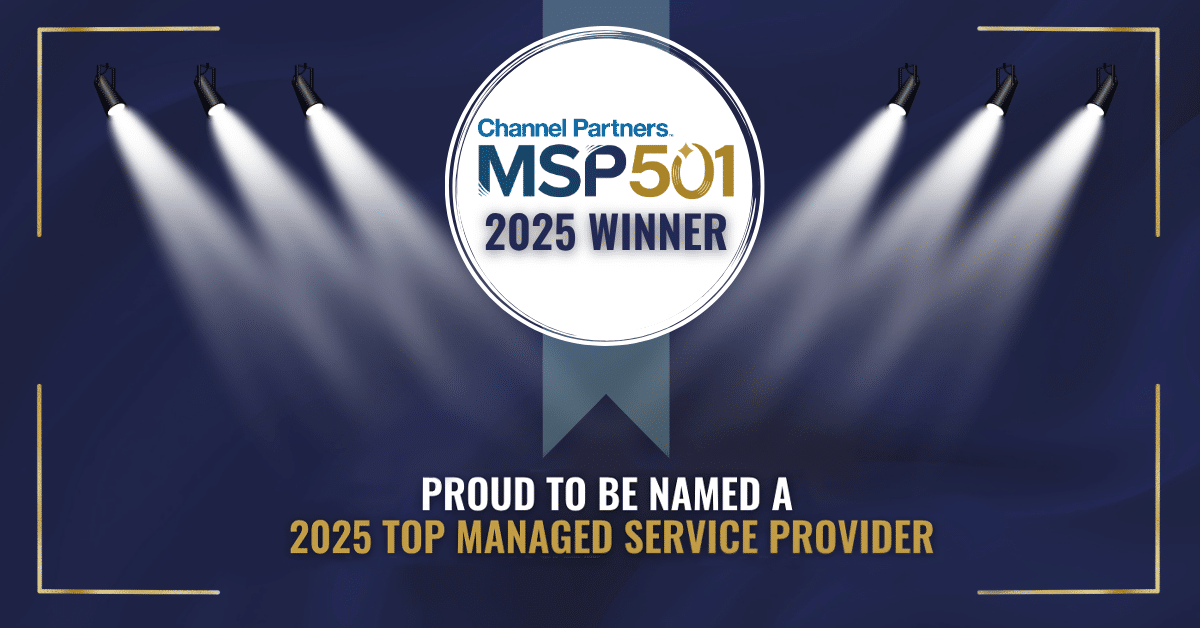Small and midsized businesses (SMBs) are constantly navigating a complex web of security challenges. Safeguarding sensitive data, maintaining compliance, and defending against sophisticated threats like business email compromise require a strategic approach. That’s why we’ve meticulously curated a suite of security checklists designed exclusively for SMBs like yours.
Table of Contents
12 SMB Security Checklists & More!
Whether you’re looking to master CMMC compliance or to fortify your cybersecurity framework, these twelve resources act as your roadmap to a more secure future.
1. Start with the Basics
The 11-point IT security checklist gives you the essential best practices to elevate your defenses, safeguard critical business data, and build long-term resilience against evolving cyber threats.
Each step is tailored to address the unique security challenges faced by SMBs, empowering you to proactively manage risks and stay focused on driving business growth.
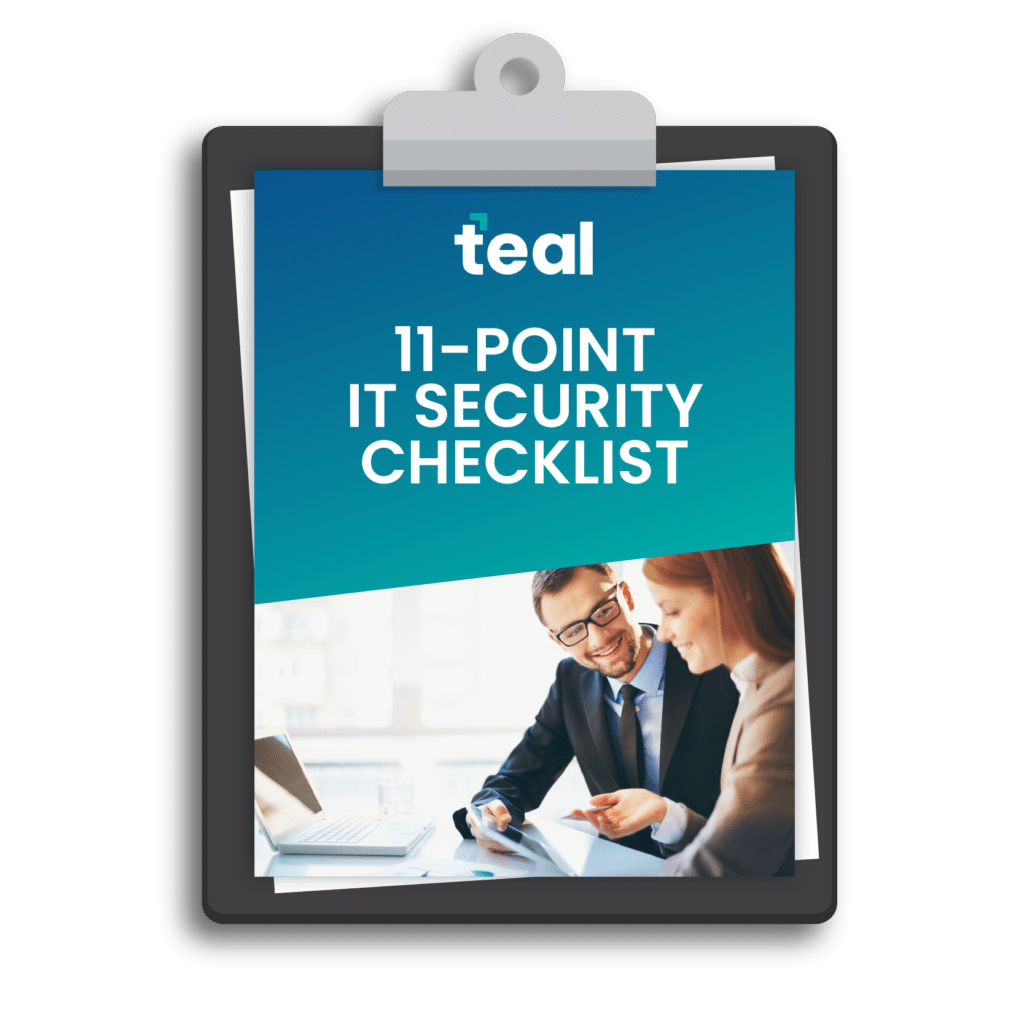
Use these security best practices to enhance your business’s resilience against cyber threats and productivity-killing IT issues.
2. Empower Your Traveling Employees
Traveling can expose your company’s sensitive data to increased risks. To mitigate these threats, we’ve developed a cybersecurity checklist for employees on the move.
From pre-travel preparations to secure practices while in transit, this guide provides practical tips to protect your business information wherever your team goes.

Data doesn’t just sit in an office anymore. It travels with us. Equip your team with this checklist of 19 essential practices to safeguard business data while on the go.
3. Reduce Risk & Streamline Employee Transitions
Seamlessly integrating new hires and managing employee departures is vital for maintaining security and operational consistency. This checklist serves as a step-by-step guide to minimize security risks and provide a streamlined, positive experience for incoming and outgoing employees.
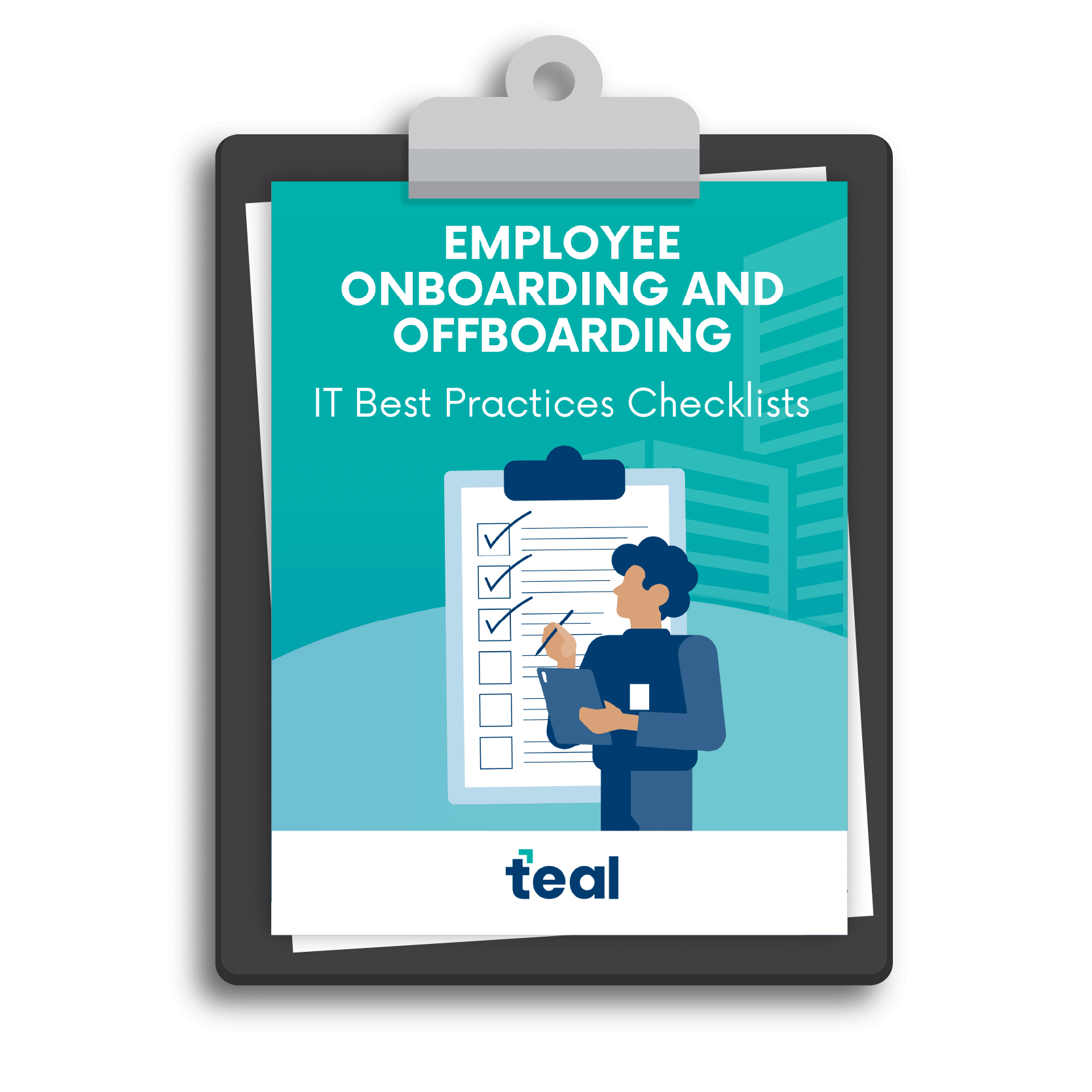
Optimize IT onboarding and offboarding in your small business using our expert checklist today.
4. Outsmart Phishers
Phishing attacks are one of the most pervasive threats to small businesses. This cheat sheet is packed with actionable strategies to train your employees and fortify your defenses.
From recognizing deceptive tactics to responding effectively in the event of an attack, this guide provides everything you need to keep your team alert and your data secure.

Strengthen your organization’s defenses against advanced cyberattacks, like ransomware, by elevating phishing awareness with these expert tips and actionable insights.
5. Evaluate Your Cybersecurity Posture
Every day we seem to hear a new story on the news about large organizations becoming a victim of cybercrime – such as the 2023 Okta breach that wiped out more than $2 billion in market cap. While large enterprises get a lot of media coverage, small organizations are just as susceptible to cyber attacks.
According to the Identity Theft Resource Center (ITRC), 45% of US small business owners have experienced a security or data breach. What’s worse, more than 40% struggled to understand what happened and why – making it impossible to prevent future cyberattacks proactively.
Because small businesses often lack the resources needed to implement a robust cybersecurity program, our cybersecurity experts recommend that small businesses focus on implementing foundational security measures.
Use this cybersecurity checklist to quickly evaluate whether your organization has the solutions in place to protect your future.
If you find your security posture is lacking after you complete the checklist, visit this page to learn how to build a create a cybersecurity program.

Does your organization have the foundational security solutions implemented? Evaluate your cyber readiness in just 10 minutes with this checklist.
6. Avoid Business Email Compromise
Proactively safeguarding your organization from falling prey to business email compromise (BEC) is essential. In fact, the FBI reported that BEC scams were the second most costly cybercrime in 2022 – with losses of over 2.7 billion. Fortunately, there are several best practices that you can implement to mitigate the risks your organization faces.
These practices are not only simple to follow but also highly effective. Share the best practices below with your entire team – from interns to CxOs – to help protect your organization from this prolific attack.

7. Enhance Email Security
Implementing email security best practices is paramount to small business cybersecurity because email remains one of the primary channels for cyber threats. Small businesses often become targets for cybercriminals who exploit vulnerabilities in poorly secured email systems, leading to phishing attacks, malware distribution, or even ransomware incidents.

Your SMB can achieve great things by fortifying your email security. In fact, you can significantly minimize the likelihood of a successful attack by making small changes, like:
- Conducting regular security awareness training for employees.
- Implementing multi-factor authentication.
- Monitoring email traffic for suspicious activities.
- Keeping software and systems up to date.
Use this email checklist as a starting point to enhance the security of your organization. With the right setup, you will enhance your security against BEC and other email threats.
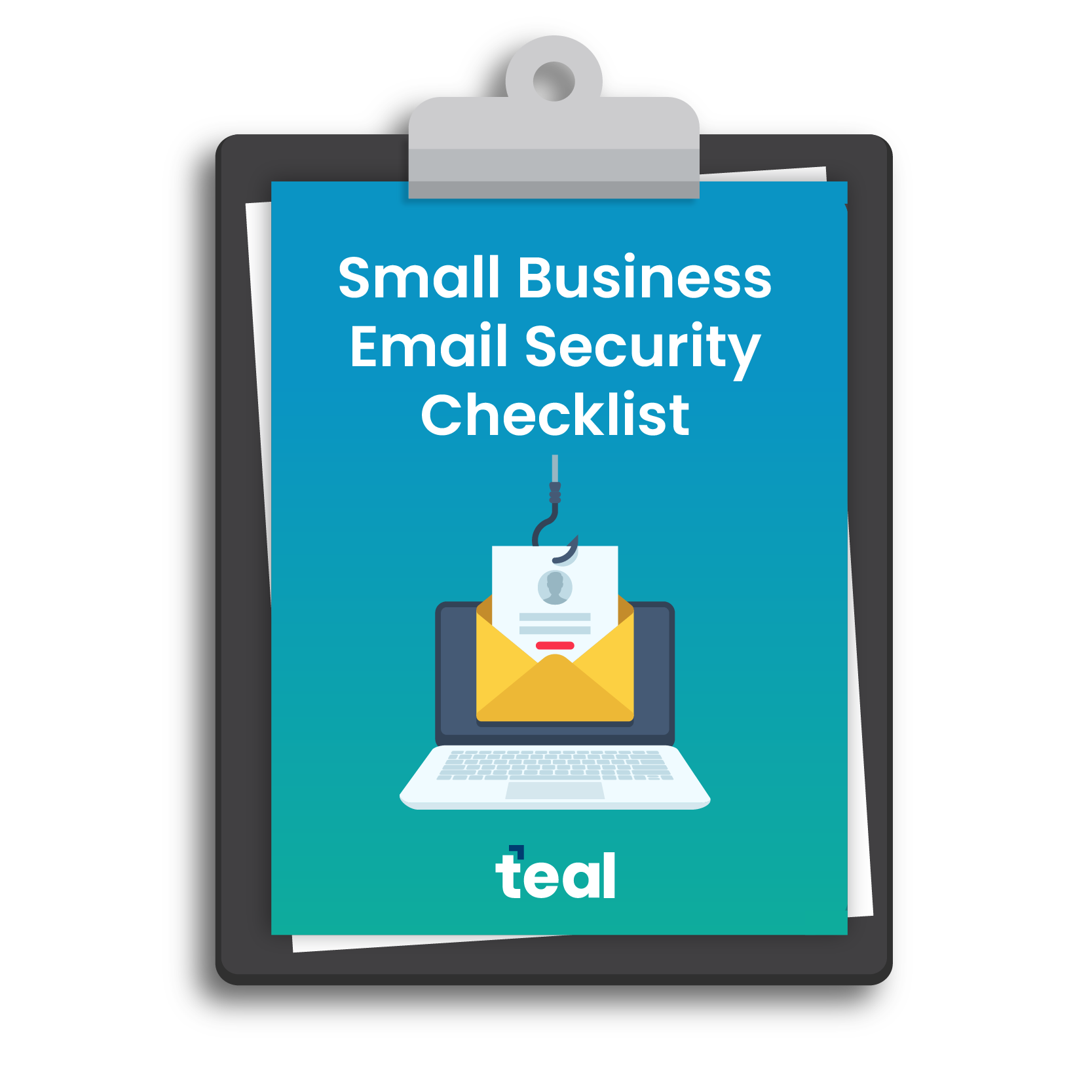
Discover the proper setup, strategies, and tools you need to take control of your email security to prevent business email compromise.
BONUS: Master Google & Yahoo’s 2024 Email Authentication Requirements
Navigating recent changes in email authentication can be daunting for businesses relying on consistent email communication. Our collaborative guide with EasyDMARC unpacks everything you need to know about Google and Yahoo’s new requirements—empowering you to protect your domain’s reputation, avoid deliverability issues, and ensure your messages reach the right inbox.

Discover everything you need to know about the recent email authentication changes to ensure your emails continue to reach your customers’ inboxes.
8. Protect Patient Data
Data breaches that expose protected health information happen more often than is comfortable for patients and their families. And when they do happen, they’re costly. A recent example is the agreement from a 2019 healthcare data breach that affected 1.5 million Americans – including over 100k Minnesotans. The settlement of this data breach includes $1.4 million to be divided amongst the affected states and a compliant information security program.
As a small healthcare business, you have the opportunity to make a positive impact on your patients’ lives – from elevated care to data security. Use this HIPAA compliance checklist to self-assess your organization.
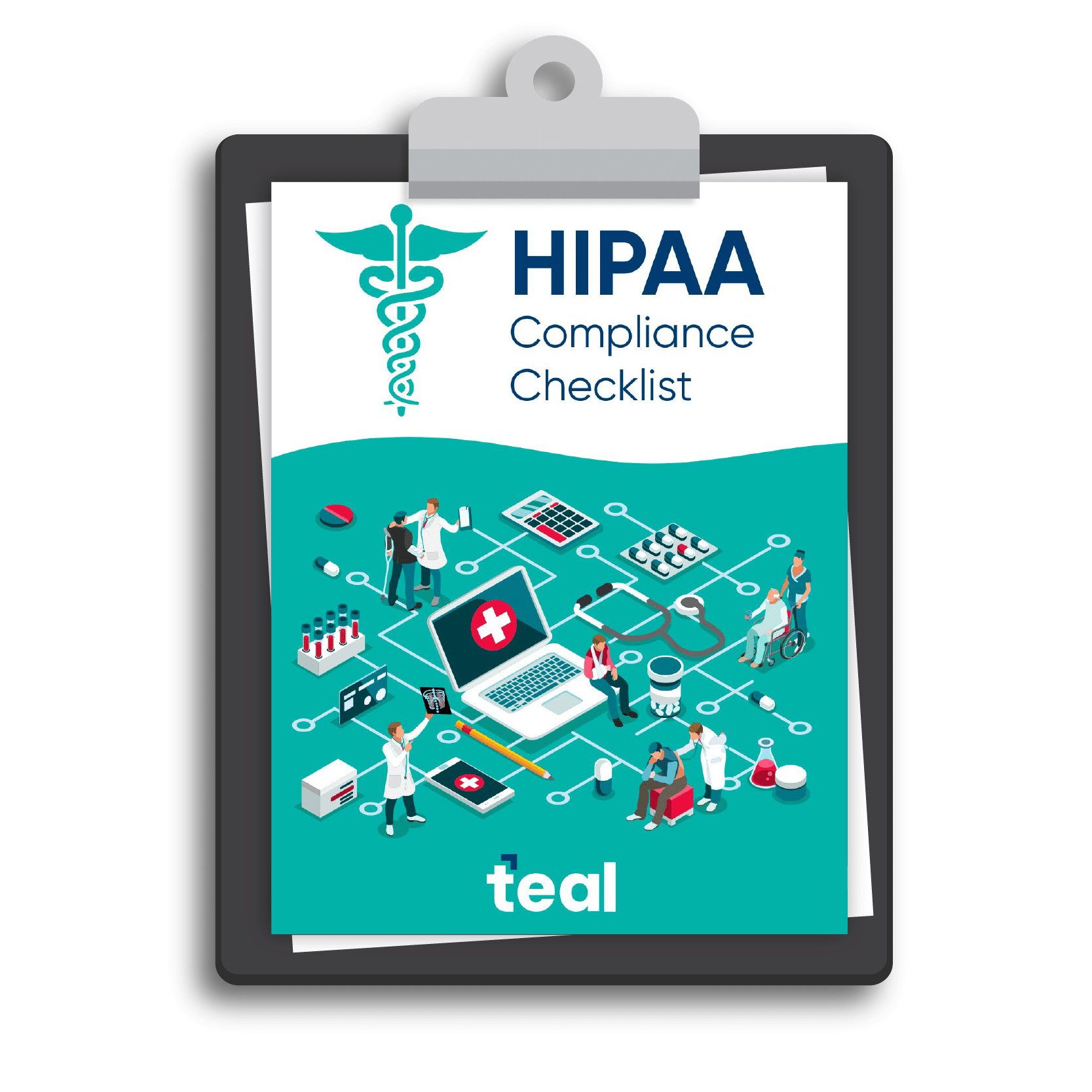
Safeguard patient information and foster a strong reputation as a trusted healthcare provider with this self-assessment.
9. Safeguard Government Data
The Cybersecurity Maturity Model Certification (CMMC) is a set of guidelines that were created to keep national security information secure when it is shared between the Department of Defense (DoD) and its contractors and subcontractors. But with so much information out there on CMMC compliance, it can be overwhelming to know where to start.
That’s where our guide comes in. You’ll have everything you need to know, from understanding the purpose and benefits of the certification to preparing for your CMMC audit. You’ll also learn about the different maturity levels and get a pre-assessment compliance checklist to ensure you’re on the right track.
In addition, the guide also discusses how managed IT services can help DoD contractors meet their CMMC requirements. With this guide, you’ll have all the information you need to empower your company with CMMC knowledge and achieve compliance.
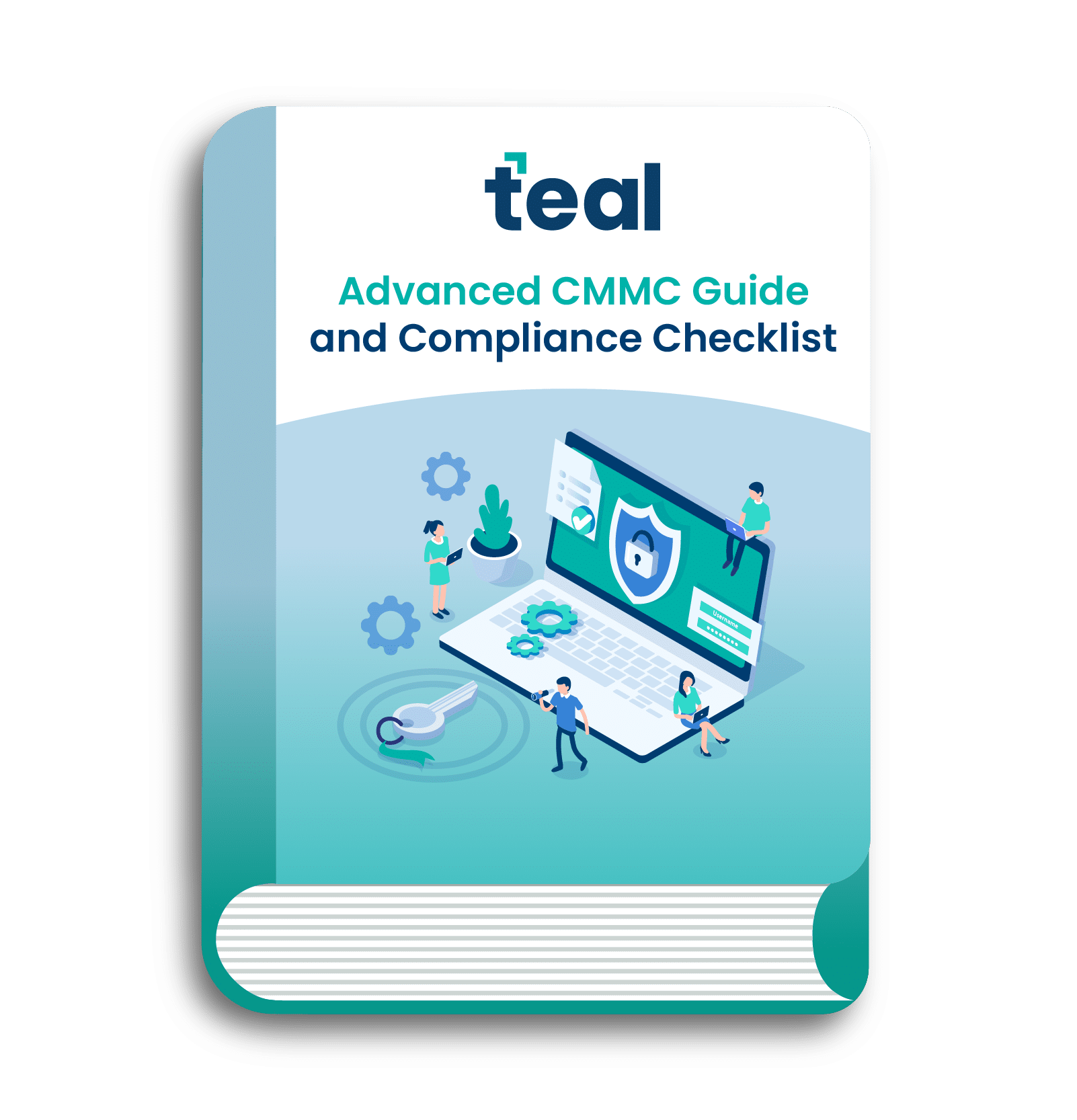
Empower your company with CMMC knowledge. This guide covers the process, benefits, maturity levels, and how to prepare for your CMMC audit.
If you find that you’re still unsure about how to protect Federal Contract Information (FCI) and Controlled Unclassified Information (CUI) after reading the guide, Teal’s expert team can assist you in developing a CMMC compliance program. Learn more about our CMMC services – including our CMMC QuickStart option.
10. Browse the Internet Safely
The internet is a vital tool for business, but it’s also full of hidden risks. Cybercriminals are constantly evolving their tactics, looking for ways to exploit businesses through malware, phishing scams, and data breaches. Without strong browsing security, your organization could be an easy target.
Implementing safe browsing practices is one of the simplest yet most effective ways to protect your business from cyber threats. By taking proactive steps, you can reduce the risk of falling victim to malicious websites, fraudulent emails, and harmful downloads.
Check out our 15 Best Practices for Safer Internet Browsing to ensure your team is following essential security guidelines.
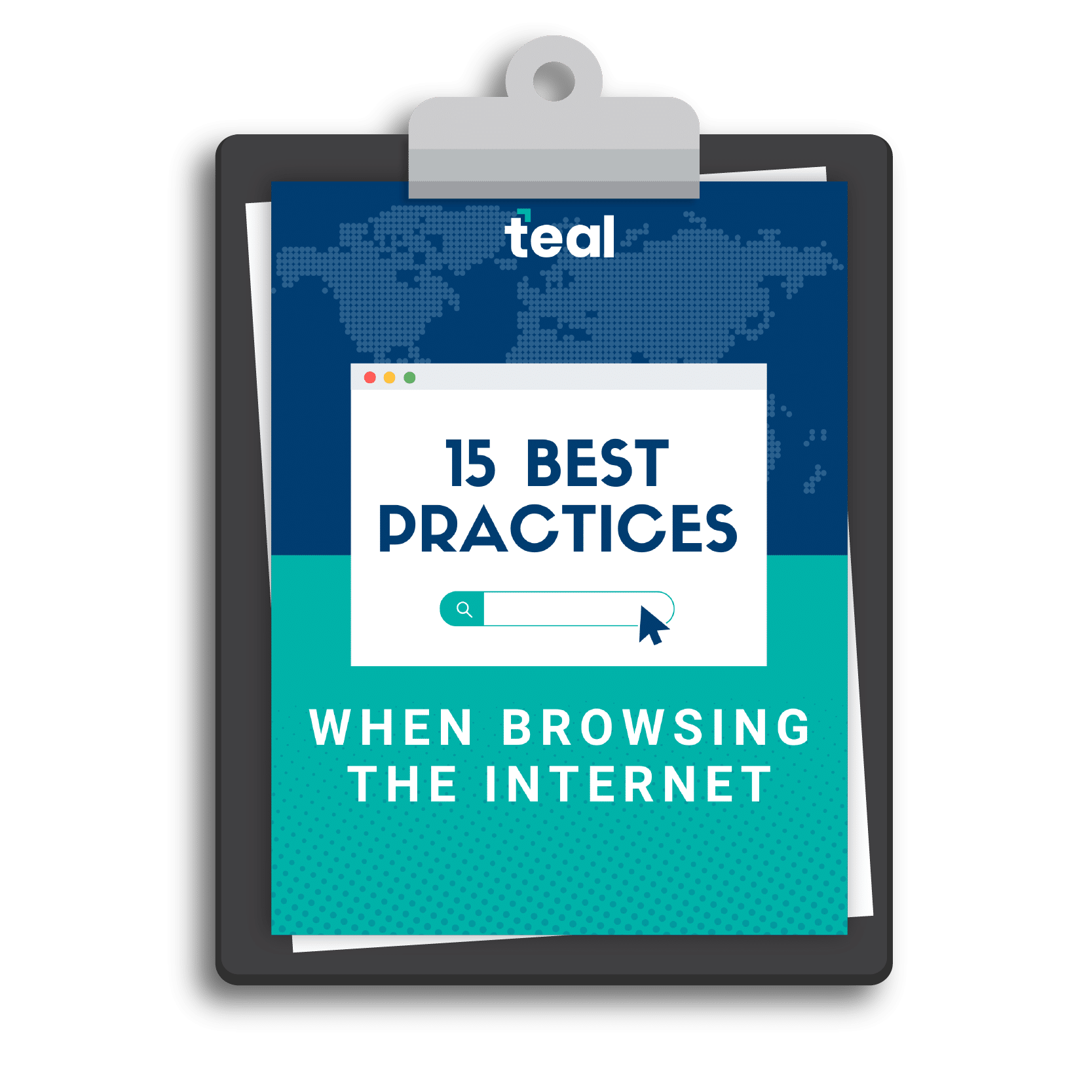
The internet is full of hidden threats because cybercriminals are always looking for ways to exploit businesses. Without proper browsing security, your organization could be vulnerable to malware, phishing, and data breaches. Implement safe browsing practices today to reduce your risk.
11. Strengthen Your Business Security with Better Passwords
Your business’s cybersecurity starts with one critical layer of defense: strong passwords. Weak or reused passwords make it easier for cybercriminals to gain access to sensitive data, leading to costly breaches and potential compliance violations.
Without a strong password policy, your organization is at risk.
Implementing password best practices can significantly reduce your exposure to cyber threats. From using complex, unique passwords to enabling multi-factor authentication (MFA), small changes can make a big difference in securing your accounts and business data.
Is your team following the best password security guidelines?

Strong passwords are the foundation of your business’s cybersecurity strategy. Without them, your organization could be vulnerable to costly breaches and cyberattacks. Add these best practices to your password policy.
12. Is Your Business Secure? Put It to the Test!
Does your business have the security measures in place to stay protected? Many executives believe their business is secure, but hidden vulnerabilities leave them exposed to cyberattacks.
Are you confident in your cybersecurity strategy?

Put your knowledge to the test with our SMB Cybersecurity Quiz and see if your business is prepared – or if there are gaps you need to address.
13. Clutch Cybersecurity Checklist
We are honored to be featured in a Clutch article on cybersecurity. One of our cofounders, Gar Whaley – CISSP, CISM, CGEIT, CISA, CMMC RP – contributed his valuable insights.
Their article serves as a guide to effectively plan and implement cybersecurity measures, including seven important considerations for a cybersecurity project:
- Setting clear project goals and scope
- Identifying risks and vulnerabilities
- Assessing resource and budget needs
- Understanding legal and compliance requirements
- Planning employee training and awareness
- Factoring integration with existing infrastructure
- Hiring a cybersecurity firm with expertise
Explore the essentials every cybersecurity checklist should include (plus, get access to their downloadable resource).
Enhance Your Security One Checklist at a Time
Small businesses face a myriad of cybersecurity challenges—from protecting sensitive data to securing email communications. These security checklists provide you with the essential steps to bolster your defenses, streamline compliance, and ensure your business is well-protected against evolving threats.
Need Help Securing Your Data?
We recommend you partner with a sophisticated managed IT service provider (MSP), like Teal. With our managed cybersecurity services, you can focus on growing your business while we handle the technical stuff.
Our team provides responsive and secure managed IT support in key cities, ensuring your business receives the assistance you need, when you need it, including:
If you’re interested in learning more about our cybersecurity services, contact us today.


